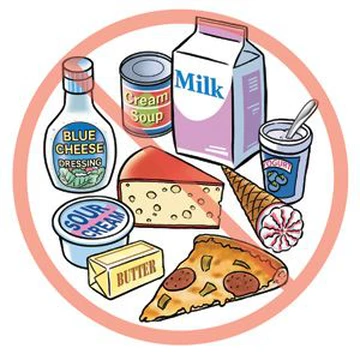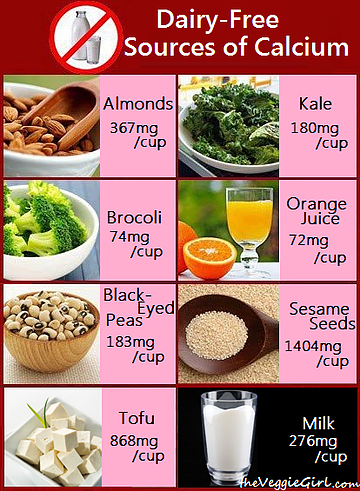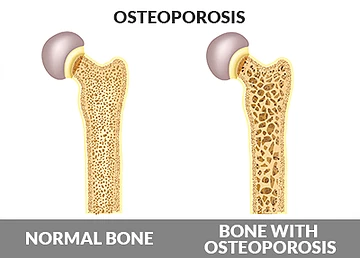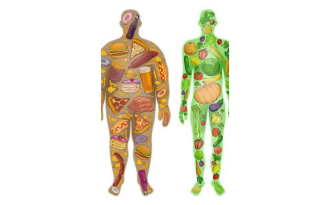Lactose intolerance: Tips to deal with lactose intolerance

Lactose intolerance is a very common issue globally. According to the National Institute of Health (NIH), around 65% of the total population of the world is affected by the indigestion of lactose.
Firstly, we need to know what lactose intolerance is:

Lactose intolerance is a condition where our digestive system is not able to digest lactose properly.
Lactose is a disaccharide compound (composed by galactose and glucose), which is mostly found in milk and dairy products.
Lactase is an enzyme, which is found in the small intestine. Lactase helps to breakdown lactose into two simple carbohydrates (galactose and glucose) and helps in energy formation.
In the case of lactose intolerance, a sufficient amount of lactase enzyme is not produced to digest lactose properly. As a result, the undigested lactose stored in our gut is contaminated by gut bacteria and creates digestion related problems.
Common symptoms of lactose intolerance:
-
Nausea
-
Vomiting
-
Abdominal cramp
-
Diarrhea
Affected group:

-
Studies show that more people in Asia, American (African American) and Africa are affected by lactose intolerance compared to Europe.
-
People who are suffering from serious injuries in the small intestine due to Irritable Bowel Syndrome (IBS), Celiac disease, ulcer, Crohn`s disease, etc, in these people, sufficient lactase is not produced in the small intestine to digest lactose properly.
-
Some medicines like antibiotics may temporarily disrupt proper lactose digestion.
Lactose containing food items:

-
Cow milk
-
Goat milk
-
Milk powder
-
Cheese
-
Yogurt
-
Chocolate
-
Butter
-
Ice-cream
-
Custard
Substitutes for food containing lactose:
People suffering from lactose intolerance may be required to avoid various food items containing lactose. In such a situation, they need to substitute food products to fulfill their nutritional requirements.

1. Non-dairy calcium-rich food: Milk and milk products are a good source of calcium. Due to lactose intolerance, people are not able to take these products. Therefore, they may suffer from calcium deficiency.
Spinach, broccoli, soya bean, lentils, almonds, orange juice, salmon fish, etc. are non-dairy products containing calcium. Therefore, people with lactose intolerance can take these food items as a substitute for dairy products to fulfill their requirements.
2. Soy milk and almond milk: Soymilk is a good substitute for lactose-intolerant people. Soy milk is lactose-free milk made from soya beans. Soy milk also contains calcium and protein.
Almond milk is also lactose-free milk. It is a good source of vitamin-A, vitamin-D, Calcium and low in calories. Therefore, it can be a good alternative for lactose-intolerant people.
One thing you need to keep in mind that, these types of milk are not a good source of protein. Therefore, you need to take additional protein to fulfill the requirements.
3. Try low-lactose dairy products: Raw milk contains a high amount of lactose. The amount of lactose is not the same for all dairy products. For example, yogurt, low lactose ice cream, etc. are low in lactose. Therefore, people can experiment with these types of food items to improve the situation.
4. Take a small amount along with other food items: To improve the condition of lactose intolerance, take a small amount of low-lactose containing food with other food items. It is sometimes easier to digest low lactose-containing food when consumed with other food items.
Don`t confuse milk allergy with lactose intolerance:

Milk allergy occurs due to the overreaction of the immune system to one or more proteins contained in milk. Any type of milk or milk product can be the cause of an allergic reaction. Rashes, itching of mouth or lips or tongue or eyes, shortness of breath, diarrhea and abdominal cramp are very common symptoms of milk allergy. It may create a life-threatening situation if not taken seriously.
Lactose intolerance is the condition where lactose is not properly digested due to a lack of lactase enzyme. The immune system does not react in the case of lactose intolerance. Lactose intolerance results in indigestion and stomach discomfort but the situation never turns into life-threatening.
Due to milk allergy, people should avoid all types of milk and milk products whereas, in the case of lactose intolerance, sometimes people can consume low-lactose foods like yogurt or other dairy products without any problem.
Side effects of avoiding dairy products:

Milk and milk products are a good source of protein and calcium. Due to lactose intolerance, people avoid consuming milk and milk products. Therefore, people need to take other alternative food items, which helps to balance the requirement.
Calcium is a nutrient, which helps to maintain our bone health. Calcium deficiency also the cause of osteoporosis. Osteoporosis is a primary condition of bone diseases where the bone becomes thin, weak and likely to be fractured. People with lactose intolerance need to be cautious about it; otherwise, they may have a chance of bone disease.
Protein deficiency is the cause of malnutrition. Protein is an essential component for muscle growth and development, tissue repair and overall growth. Therefore, alternative protein-rich foods are required to prevent malnutrition.
References:
1. https://en.wikipedia.org/wiki/Lactose_intolerance#Signs_and_symptoms
3. https://www.bones.nih.gov/health-info/bone/osteoporosis/conditions-behaviors/osteoporosis-arthritis
4. https://en.wikipedia.org/wiki/Milk_allergy#Signs_and_symptoms












0 Comments